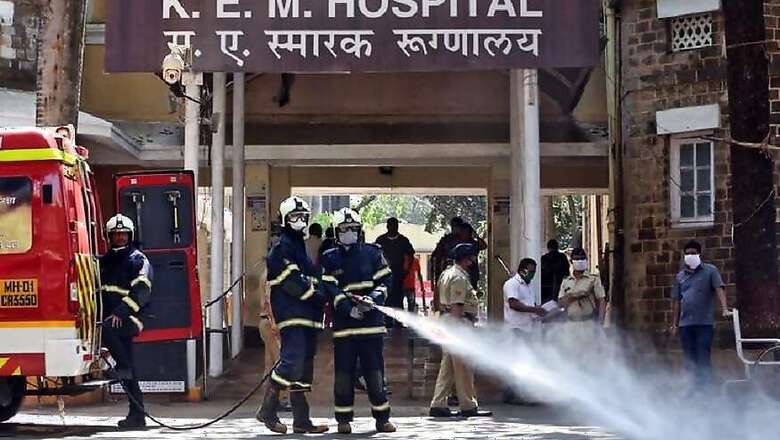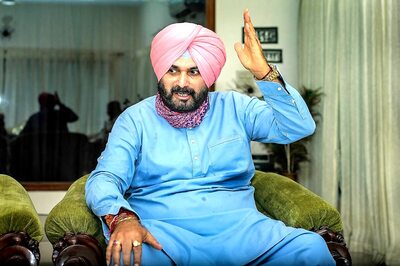
views
The World Health Organization stresses on “tests” to contain the spread of the COVID-19 pandemic. In order to boost capabilities, the Indian Council of Medical Research – the government body overseeing COVID-19 testing – has allowed private players to join the exercise. So far almost 500 cases have been reported positive. K Sujatha Rao who served as the union secretary in the ministry of health and family welfare for the government of India until 2010, said that testing is “inadequate”.
During her years in service she participated in the first ever national programme for non-communicable diseases, the process for a national policy for use of antibiotics, and introducing vaccines in public health. She has been the director general of the National AIDS Control Organisation (NACO) from 2006-2009, where she was instrumental in establishing systems and enabling the institution to implement programmes with a five-fold budget increase. She has represented India on the boards of the WHO, Global Fund and UNAIDS. Rao was previously a Takemi Fellow for International Health at Harvard School of Public Health (1993). She is currently the first Gro Harlem Brundtland Senior Leadership Fellow at Harvard School of Public Health.
1) ICMR announced there are 492 positive corona cases, and as we write this the numbers might change. How does this reflect on our capacity of testing ?
I would say that this number could be reflective of inadequate testing. In other words, if we test more people, there is a likelihood of getting more positives. In beating the coronavirus, isolation and testing both need to be done together. It’s not either or; we need both and that is what the World Health Organization also says, calling it a comprehensive approach.
2) The WHO has emphasised on testing. It has said “tests, tests and tests”. What kind of challenges do you see ahead of the government in carrying this out in India?
I don’t see any challenges in conducting tests. The restricted testing was the option chosen, based on the evidence the government had at the time that suggested that this was an infection that was being imported from abroad. And because of that, and rightly so, they focused on testing people who had returned from abroad. They also tested those that may have been in contact with them and having symptoms. Having said that, for expanding testing, the government would need to expand the laboratories with capacity, which means the trained personnel, to do the test properly and likewise in the private sector. Secondly, they need to get the consumables and put in place the logistics. As of now I think the reagents, etc, are imported. Whether we have adequate number needs to be checked up. I am not aware of the stock position.
3) With the outbreak, there is debate worldwide on how underfunded our health sector is. There is a shortage of ventilators, not just in India but also in the US and Europe. How are we going to deal with the situation?
So long as the numbers needing ventilators are within our capacity we will not have a problem. But if they exceed, we will have a problem and we may lose patients without being able to provide treatment. This is the reason the focus is on prevention and in ensuring we don’t have a surge in the number of cases. We can also categorise patients and those with mild symptoms can be treated in secondary hospitals.
4) The government has denied coronavirus community transmission here. But according to experts, the samples of testing as compared to other countries are too few to determine that. What do you have to say on this?
I will say that test more and try to map where the virus is circulating because that will be the basis for the strategies to be formulated.
5) There is a lockdown and people are being told to practise social distancing. There are sudden changes, putting the common people through mental trauma. How do you see this impacting the vulnerable in the society?
The poor who depend on daily wages or the informal sector whose earnings depend on daily sales or business like autorickshaw drivers, vendors, etc, will undoubtedly suffer the most. The government must come up with a safety net for them to tide over the next few months. But how much can the government do to address a social problem? I think this is a time when all of us need to rise up to this challenge and come forward to help such population groups at this hour of need.
6) There is a major concern regarding the shortage of protective gear of the doctors and nurses. How can the government deal with the situation when the army itself is not equipped?
I am not aware of the status of procurement of PPE. You may have to ask some government official to clarify on the problem. There is no doubt that demand would have gone up manifold and we do need to step up by procuring them quickly.
7) The superpowers are working hard on finding a vaccine to COVID-19. Till that happens, what needs to be done?
We need to prevent getting infected, there is a need to ramp up hospital capacities to treat those who are sick and ensure that people do not die. So, keep morbidity and mortality low by taking a multi-pronged approach to the problem. Budgets will have to be increased hugely for ensuring we all have health security.
8) The crisis is going to hit Kerala differently from Uttar Pradesh and Bihar. What do you think can be emulated from states like Kerala so that they are better prepared in fighting the pandemic in the times to come?
Kerala has high levels of educated people and with that comes awareness. The health infrastructure – both public and private – is very strong and capable. Kerala has enough doctors and nurses. And more than anything, they have a systematic way of functioning, following the guidelines very seriously and maintaining discipline. UP and Bihar have to aspire to reach that level by improving and strengthening their public health infrastructure, improve the quality of infrastructure in their medical colleges and develop a good human resources policy for the short and medium term, and have to prioritise where and on what the government needs to focus upon and do that.




















Comments
0 comment